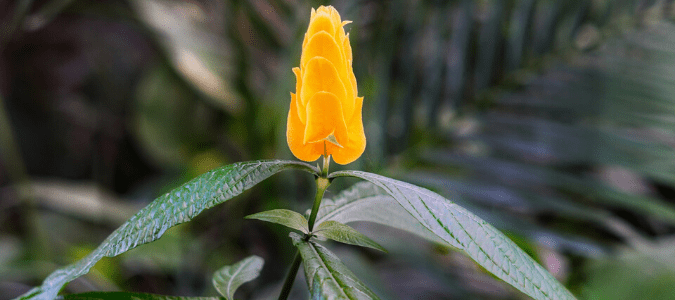
Living in Texas means dealing with blistering heat during the summer months and, let’s face it, often during the spring and fall as well. Many regions in the state also face harsh weather conditions in the winter, which means any Texas yard or garden must be as hardy as Texas homeowners themselves. This is why landscaping with drought tolerant Texas plants has become so popular in landscape design.
In addition, due to the size of our state, not every plant is adapted to every area. Depending on where you’re located, here are a few options for drought resistant plants that will thrive in your yard:
- Central Texas: Black and blue sage, pink salvia, oregano, carpet rose, mint and rosemary.
- North Texas: Hot lips salvia, lamb’s ear, rock rose, Mexican bush sage, beautyberry and St. John’s wort.
- South Texas: German red carnation, yarro, oxblood lily, Mexican heather, indigo spires salvia and firebush.
- East Texas: Baby’s breath, blanket flower, calendula, moss rose, stokes’ aster and verbena.
- Upper Gulf Coast: Trailing lantana, autumn aster, Indian blanket, daylily, peppermint and shrimp plant. The golden shrimp plant is pictured above.
Furthermore, different plants have different features that make them more resilient under dry and hot conditions. Some plants have trichomes, or tiny hairs, that allow them to grab water and hold onto it. These hairs also reduce airflow over the plant, which decreases evaporation. Plants that are waxy to the touch are generally drought tolerant, because this waxy layer limits transpiration, therefore helping the plant retain water. Drought tolerant trees have root structures that grow laterally, in addition to growing underground, which allows them to absorb water and nutrients on the surface and deep in the soil.
Typically, native plants fare well outdoors in Texas because they are already well adapted to the soil of the area as well as the often drought-like precipitation levels and intense summer heat, making them relatively low maintenance. This is why native plants are a primary aspect of xeriscaping, which is a philosophy and method of landscaping focused on design choices that use as little water as possible.
Anyone who has dealt with patchy, dry, sun-scorched grass may have considered xeriscaping their yard, as this option offers both dynamic aesthetics that can be customized for any outdoor space and low-maintenance appeal that could tempt homeowners on any budget. Fortunately, most landscaping professionals in Texas are well-versed in the principles of xeriscaping and can educate and advise you on the best plants and design options for your outdoor space.
In this post, we’ll review tips for helping your yard survive through the Texas heat, as well as ways that you can make your yard more drought tolerant.
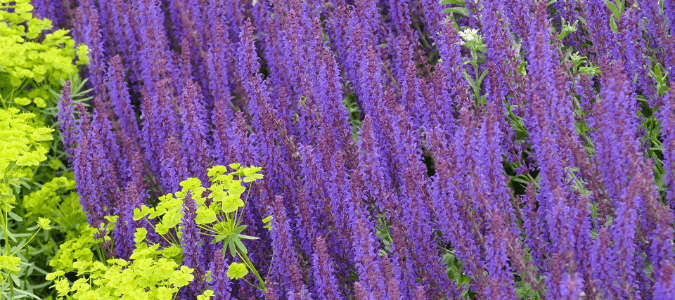
Xeriscaping Texas Yards
Xeriscaping is a concept that was developed and trademarked in Denver, Colorado, during a particularly pronounced drought in the 1970s and ’80s. Colorado’s climate is naturally arid even in the best of times, and it can be quite expensive, not to mention ultimately wasteful and unproductive, to try to keep plants with high water needs alive under these circumstances. The concept of xeriscaping was developed in response to the urge to conserve water by working within the constraints of a naturally dry climate. As such, incorporating native, drought-tolerant plants into outdoor spaces was a logical component of this practice.
Since native plants have, by definition, naturally adapted to local conditions, including temperature highs and lows, precipitation levels and unique soil characteristics, they are already well suited for long-term beauty and appeal in yards and gardens. Once they are well established, native plants often don’t even require watering, fertilizing or pesticide applications, as they tend to thrive on their own without much intervention.
Whether you decide to change your landscaping on your own, or you contact a professional to help, here are the steps to take when xeriscaping your yard:
Start With A Plan
Have your yard’s layout drawn out, by a professional or yourself, to determine what you want different parts of your yard used for. Think about the amount of maintenance you’re willing to put in, as well as your budget.
Prepare Your Soil
Test your soil to see if it requires fertilizer and what kind of nutrients it may need. Usually, you will only need fertilizer in areas that you will be planting shrubs or flowers.
Select Your Plants
Now, for the fun part! Decide which plants you want to put where. Fortunately, Texas nurseries are now offering more selections when it comes to native plants and many times they will be able to give you recommendations. Or, a landscape professional will be able to give you guidance and can actually do the hard work of planting the plants!
Choose Your Grass Type
You have two options when it comes to xeriscaping your grass. One option is to select a grass such as bermuda rather than St. Augustine since it requires less water than other varieties. Or, you have the option to reduce the amount of grass you have in your yard and replace it with artificial turf, hardscaping or a feature like a deck or a gazebo.
Water Wisely
Once everything is planted, you’ll need to create a watering schedule. Keep in mind that in the beginning, you’ll need to water more frequently. As your plants become established, they will require less maintenance.
Remember, xeriscaping Texas yards doesn’t have to be an all-or-nothing undertaking. It certainly can be a whole-yard transformation, but it can also be as simple as setting aside just a corner of your yard or garden for a few native plants that are likely to thrive, such as Mexican feather grass, agave, yucca or purple bush sage, which is pictured above. If you want a splash of vivid color in your garden, you might enjoy plants like flame acanthus, Turk’s cap or rock rose, all of which can enhance any space with their bright pink and red hues. If you still enjoy having a grassy lawn, or smaller grassy areas among the plant beds in your yard, buffalo grass and zoysia are good choices that can stand up to wear and tear and don’t require much water to thrive.
Unfortunately, even with a low maintenance grass, many homeowners have to deal with the impact of heat stress on our outdoor spaces.
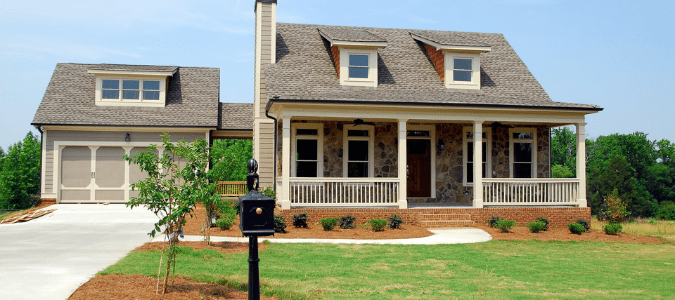
How To Revive A Dying Lawn
One thing many homeowners across the state have had to deal with is the eyesore that is a Texas yard in August. As you gaze out the window, your immediate reaction is that the dry, yellowy-brown grass that crackles and crunches underfoot is not the green, soft, lush grass you were aiming for. The good news is that there are a variety of methods to improve conditions in your yard. If the grass is already too far gone, you can replace it with hardier options that require less water and intervention.
If your lawn is dying, it may be because the variety of sod or grass seed simply requires too much water, fertilizer and other upkeep for the region. The type of grass that is generally considered to be the most drought-tolerant native grass in Texas, and which fares well in most parts of the state except for the sandier soil of east Texas, is buffalo grass. With just a bit of watering, buffalo grass can survive through the hottest summer months.
Also, keep in mind that brown grass isn’t always dead. During the hottest part of the summer and the coldest days in winter, your grass may go into a dormancy phase to conserve nutrients and water. That said, turf which is dead can’t be revived, and all the water and fertilizer in the world won’t bring it back to life.
If your lawn is still alive but struggling, you can try raking out the dead thatch in order to increase the flow of water, oxygen and nutrients to the roots and soil. Then, you can apply new seed with a drop or rotary spreader. Make sure to press the seed into the dirt with either a lawn roller or with gentle, evenly spaced footsteps. Follow up this process with an appropriate application of fertilizer, then water the fertilizer into the lawn for increased absorption. Then, just keep up with your typical lawn care schedule.
Pet owners who lament the look of their lawn can keep dogs off the grass by setting aside a fenced-off area where your pets can relieve themselves so that the high nitrogen content of their urine won’t damage your already struggling lawn.
There are other steps that homeowners can take to return their lawns to a healthier state. A landscaping specialist can provide even more tips and information about how to revive a dying lawn, and will be able to advise you on whether your grass is a good candidate for reviving. Lawn care professionals can also take on the physical labor involved with bringing your yard back to life and then keeping it green, healthy and thriving.
If you are looking to simplify your lawn care routine, there are several low maintenance grass replacement options.
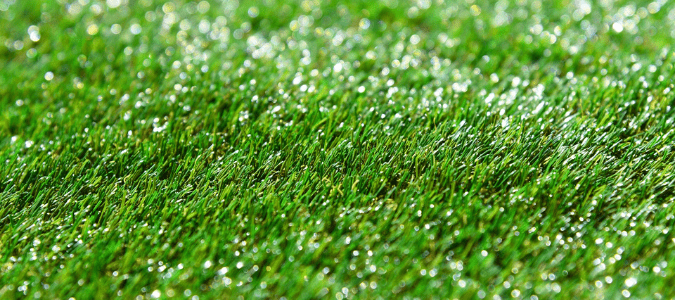
Grass Replacement Options
If your grass has been too damaged by heat or drought to merit attempts to revive it, there are several grass replacement options for homeowners who are interested in having a yard with lower maintenance needs, including using less water.
If you’re looking to replace your grass, some of your options include:
- Xeriscaping
- Artificial turf
- Wood chips or bark
- Ground cover plants
- Mulch
- Patio or deck
- Concrete pavers
You can also replace your grass with mulch or rocks, pebbles, decomposed granite or large boulders, all of which can have a lot of visual appeal while being incredibly low-maintenance. Best of all, rocks don’t need watering to survive! And, mulched garden beds retain moisture better than soil alone, and also help plants weather temperature extremes.
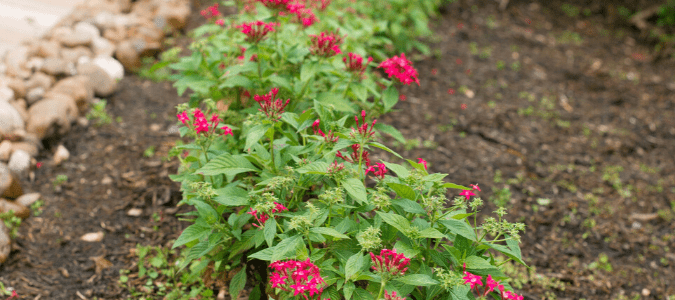
Landscaping Ideas With Mulch And Rocks
A wide variety of landscaping ideas can enhance your outdoor living space and curb appeal, and a good landscaping specialist can make recommendations that are specific to your yard. For many homeowners, the best thing about landscaping with mulch and rocks is that, once the landscaping choices have been made and the materials have been installed, there is very little upkeep required. With just some occasional weeding and refreshing of the mulch on an annual or semi-annual basis, a garden bed featuring mulched areas and rocks or granite will be far less vulnerable to drought conditions than grass or other planted beds.
Drought-tolerant plants can also be incorporated into a mulch-and-rock design for a beautiful, unique appeal that is still low-maintenance. Landscaping with mulch and rocks can also include pathways featuring brick, concrete or natural stone pavers. Larger boulders can add texture and contrast to the landscape and can be placed in mulch beds or surrounded by areas of smaller rocks, pebbles or plants. Small rocks and pebbles are available in a variety of colors, from black or brown to gray or red. Crushed granite is another popular choice, and can lend its reddish-brown hue to a broad expanse of a yard or a garden path, creating a bit of desert-like, southwestern aesthetic.
Whatever landscaping ideas with mulch and rocks that you might come up with, a landscaping professional can guide you as to aesthetic choices and design ideas that will enhance the space you already have and improve your curb appeal. Landscaping professionals will also do all the heavy lifting so you can simply enjoy the space once the labor is done.
ABC Can Enhance And Maintain Your Landscaping
Of course, once your drought tolerant landscape is finished, it will be pretty low maintenance for you. However, researching, designing, planting and gathering all the needed tools to make it happen can be time-intensive and requires a significant amount of time that many homeowners simply don’t have. Instead of putting off a small or large project while you decide how it can fit into your already-overpacked schedule, let our landscape designers transform your yard for you. Our experts are already familiar with native plants and can review what your options are for creating a low maintenance and beautiful yard.